The mission of this semester long project was to use systems of drawing from direct experience and indirect computational operation to develop a language between physical and virtual representation.
For example, “seeing” in and of itself can be viewed as a form of representation of information. The eye takes in data and the brain processes it. But to what extent, is it accuracy? What is lost in this process? What is gained?
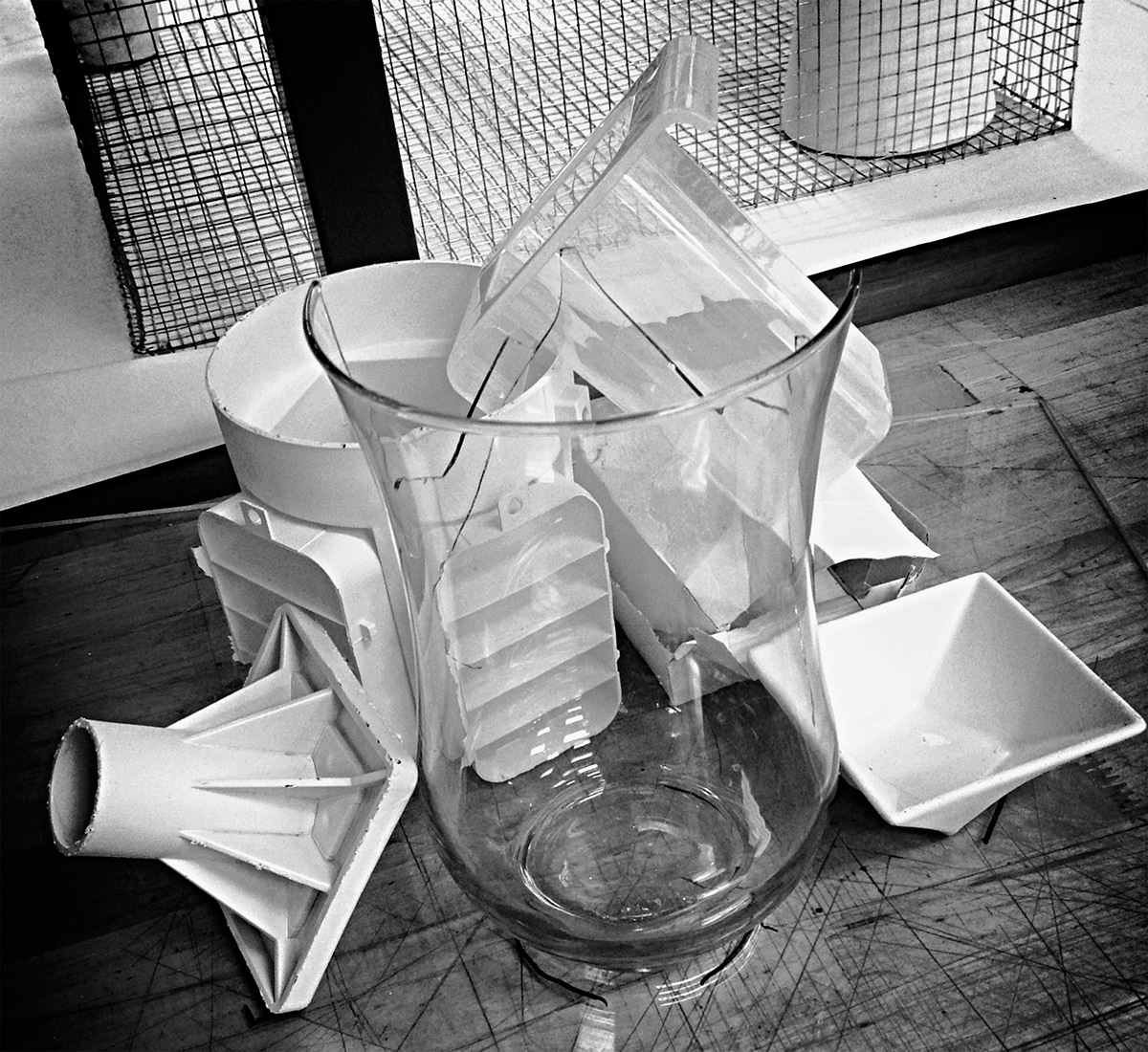
The project began with the assemblage of irregularly shaped vessels to form a “still life”. Next, the arranged objects were painted completely white and then reassembled back into their original positions. This new visual representation of the still life was then reimagined on to the still life in a sort of anamorphic projection that could be registered if one were to look at the objects from a certain vantage point.
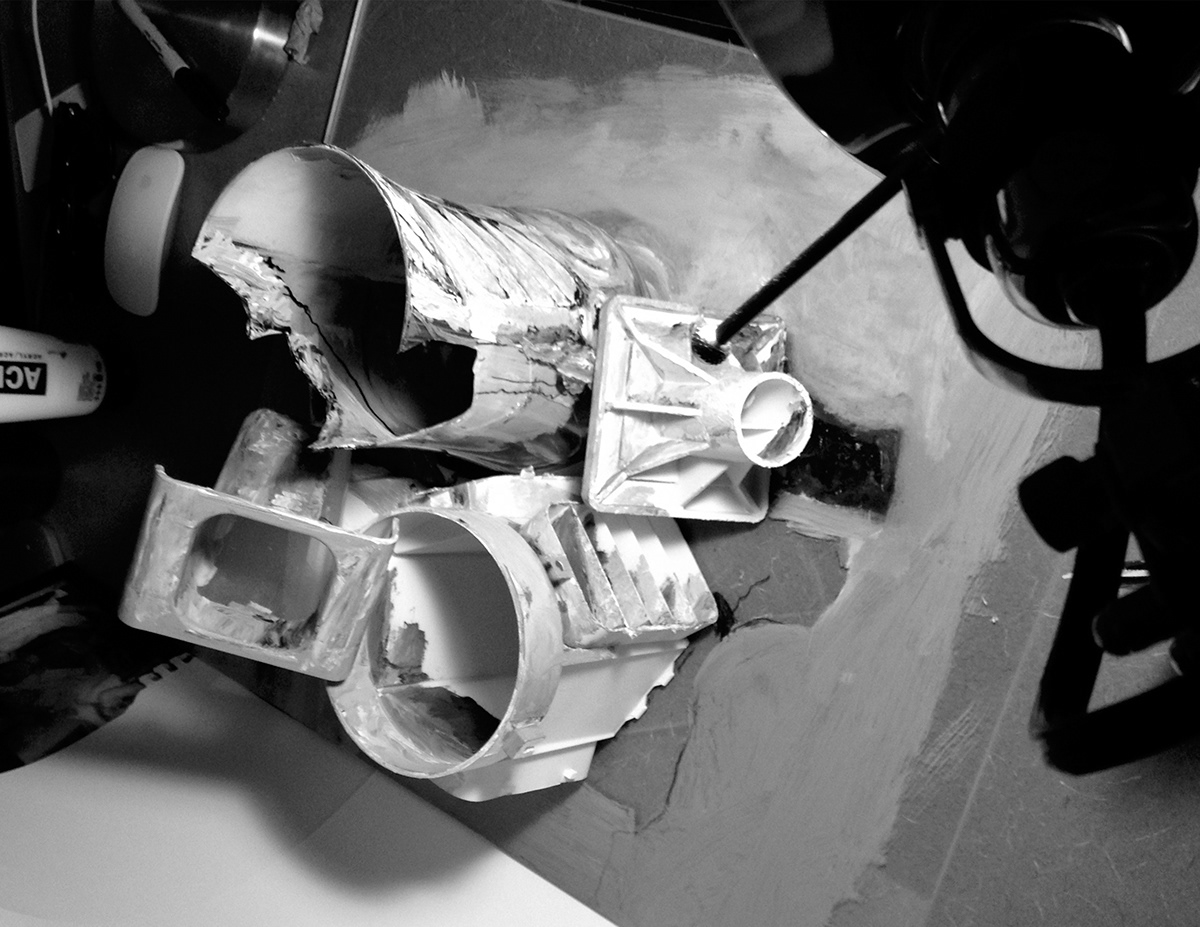

The project continued to oscillate between media, aiming to now map the projected still life phenomena using methods of both measurement and a language of mark making.
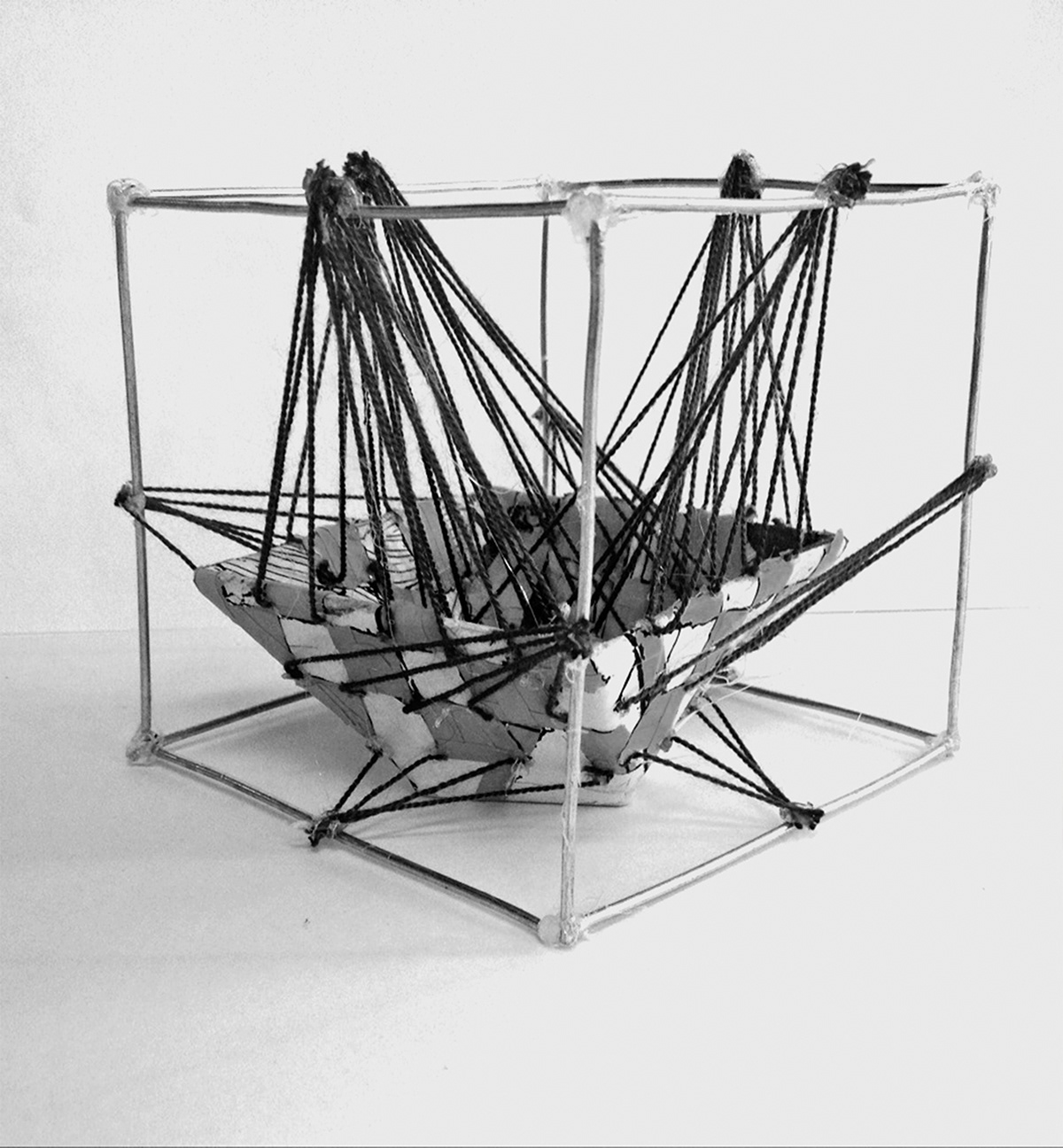
The next step involved the use of digital media (Rhino) to record and compute the relationships between perception, form and space. Methods of measurement were forced to adapt to include the translation of physical information into the space of a digital modeling.
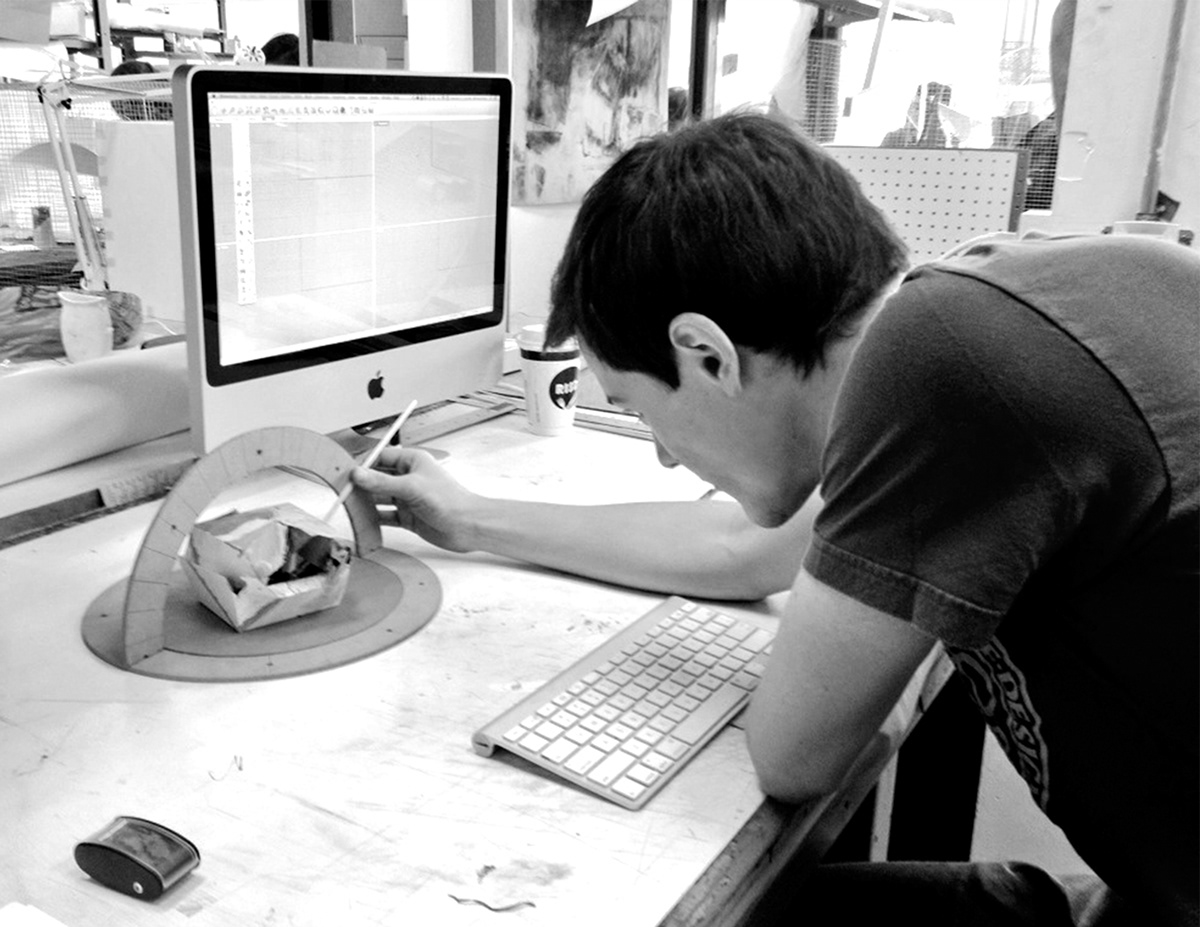
The final stage of the process was to collect the information modeled in the computer and use it to create rich, multi-layered drawings that would allow further exploration of the objects and phenomena. The two drawings below further develop the idea expressed in the first stages of this project. By giving the modeled information a defining characteristics of color (red, yellow, blue).
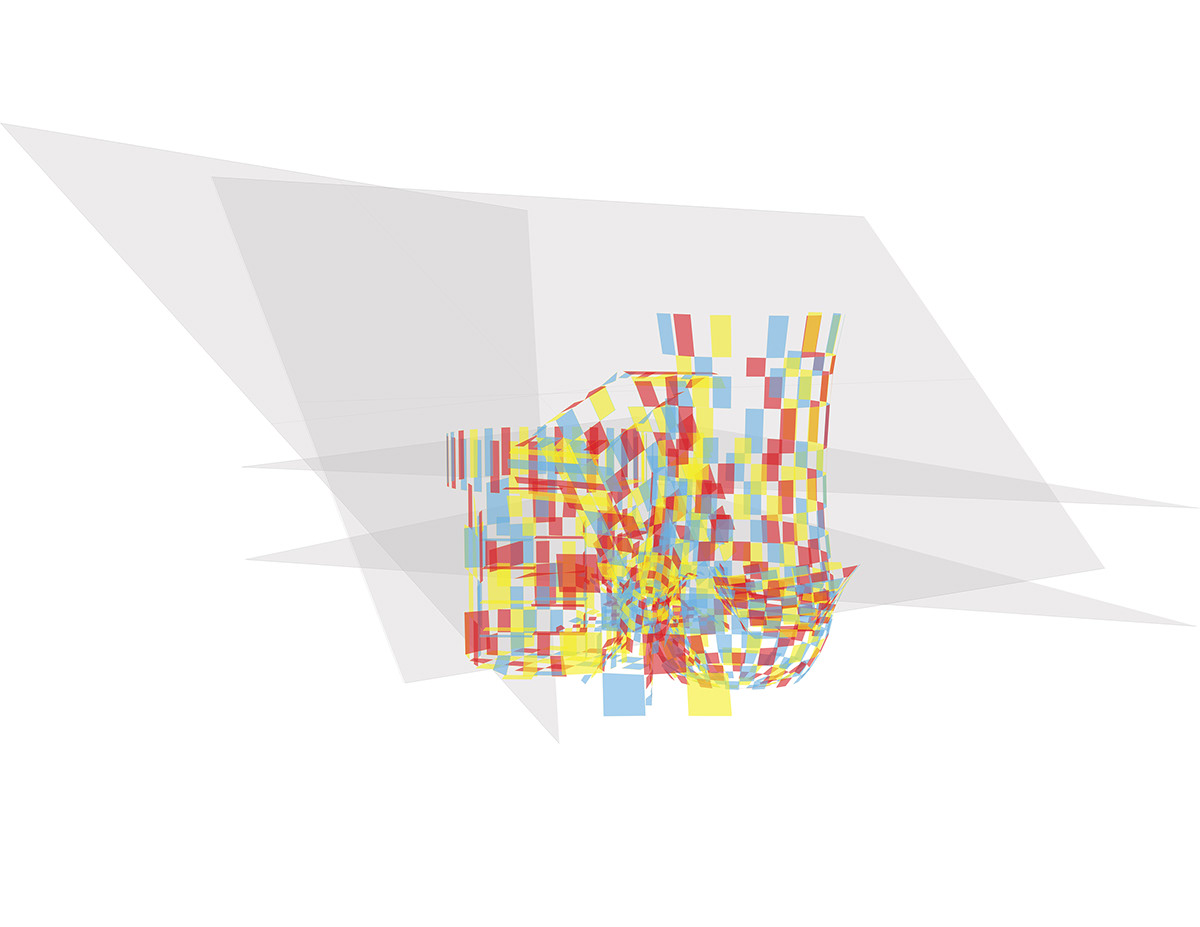
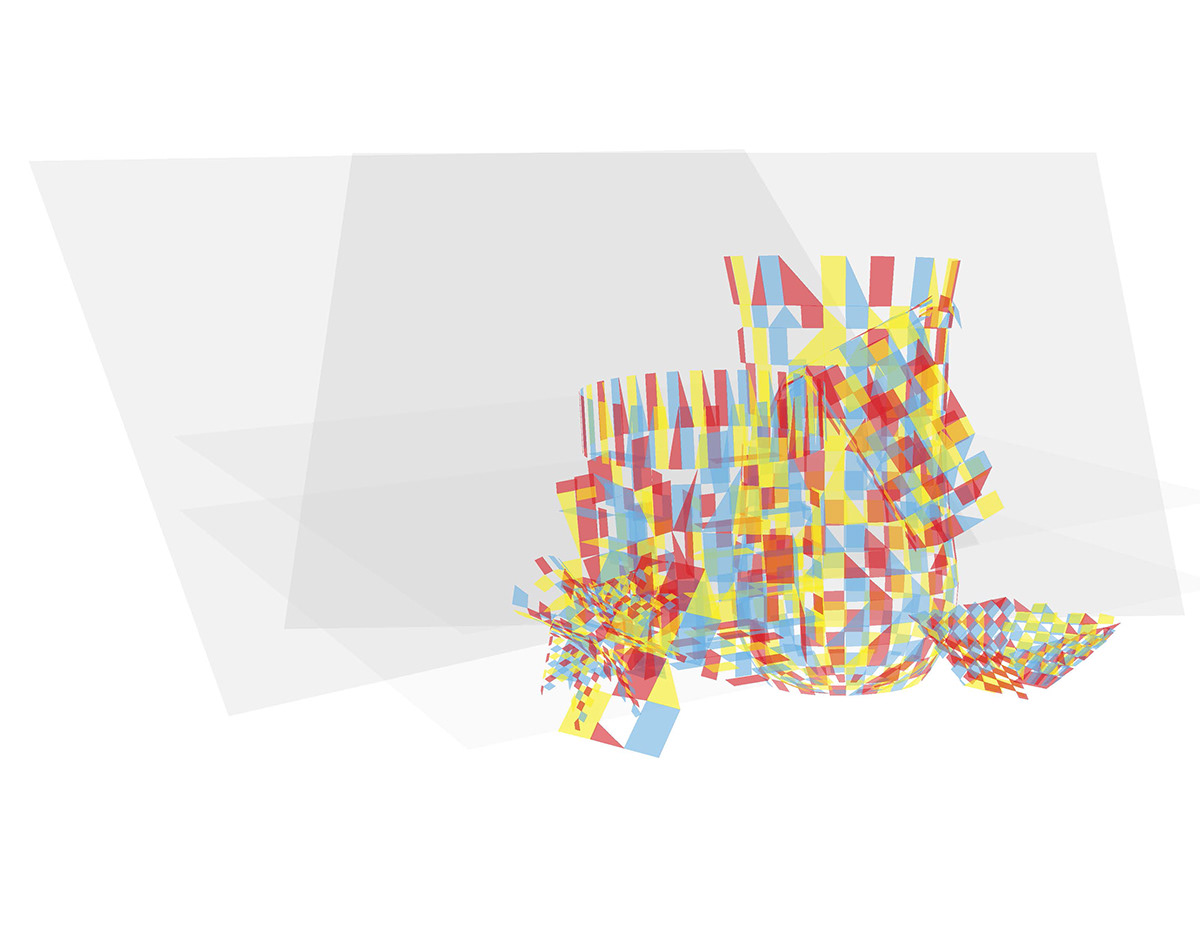
By lowering their opacities, new phenomena is created (green, orange, purple) while the relationship between forward and back is skewed. Despite being able to orient one’s self by referring back to the physical still life, a new order or form has been made that in turn could be physically reimagined as something entirely different.

